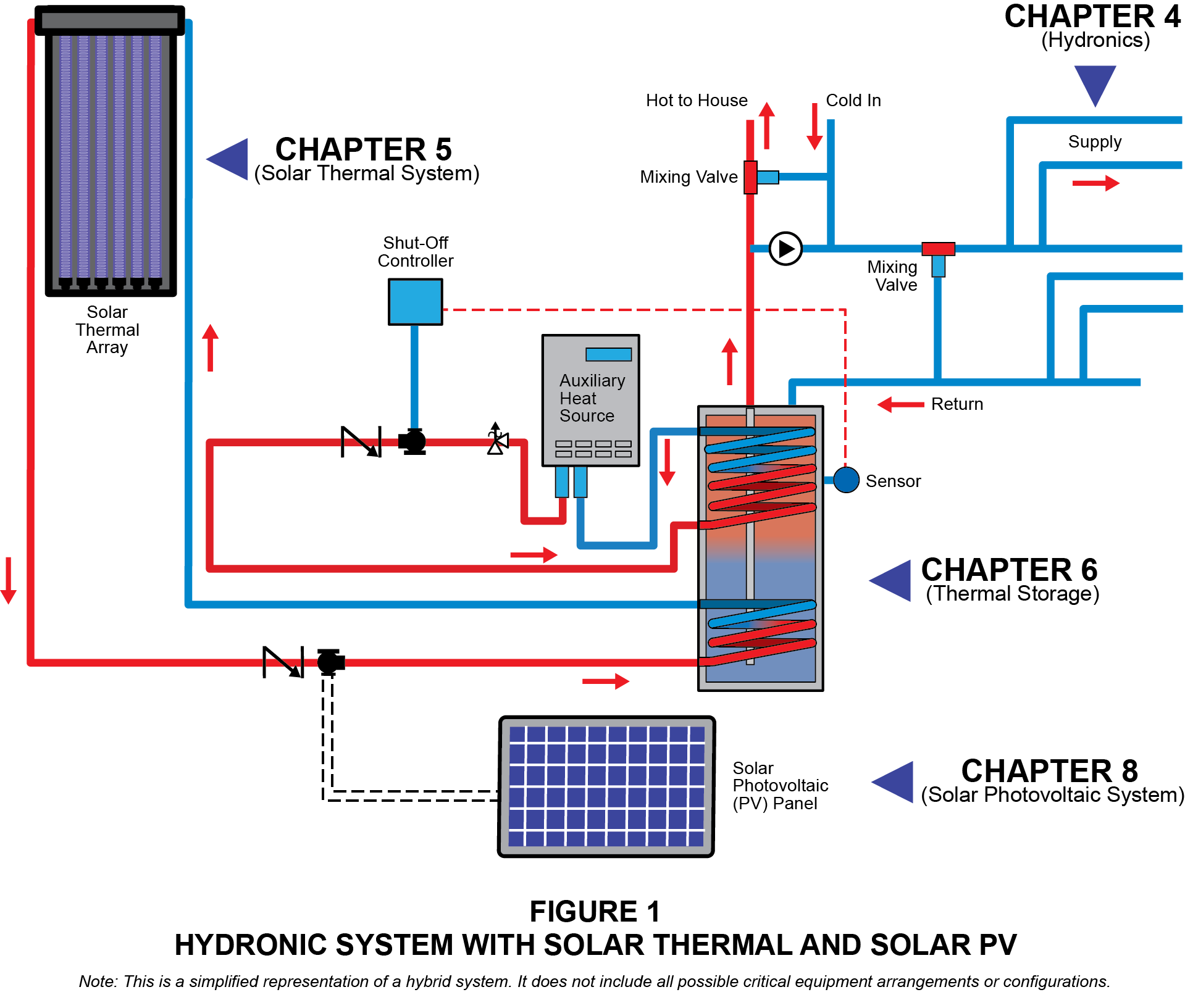The industry has long recognized the advantages of a statewide adopted solar energy, hydronics and geothermal code. The first edition of the Uniform Solar, Hydronics and Geothermal Code® (USHGC®) was adopted by IAPMO in 1976. The widespread use of this code over the past three decades by jurisdictions throughout the United States and internationally is testament to its merit. First published as the Uniform Solar Energy Code (USEC) by the International Association of Plumbing and Mechanical Officials (IAPMO), the USHGC is a code with provisions for alternative energy. It is a national standard accredited by the American National Standards Institute (ANSI).
This USHGC includes provisions for alternative energy sources for the transfer of energy in a hydronic system for space heating and cooling, or for other purposes such as snow melting. The transfer of energy can occur with the use of the sun’s energy, the earth or a body of water. The sun’s energy can be used to power equipment with the use of solar photovoltaic (PV) systems, or to heat water or other mediums with the use of solar thermal systems.

For example, figure 1 shows a combined system, which utilizes a solar thermal system, solar photovoltaic (PV) system and a hydronic system. Due to the potential exposure of Legionella, it is recommended that a dual-purpose water heater is used with an integrated heat exchanger for such combined systems. The USHGC has other health and safety provisions such as Section 402.1 which will require a closed system be utilized if the potential of polluted or contaminated water entering the potable water system exist, Section 403.2 has specific requirements for dual purpose water heaters and Section 402.3 requires protection of the potable water in accordance with the plumbing code.

Figure 3, as obtained from the USHGC (Appendix D), is an installation diagram of a solar pv system with utility demand system.
The USHGC brings all these alternative energy sources into one easy-to-use code that is enforceable and simple to read. The 2021 editions include provisions for hydronics systems in chapter 4, solar thermal systems and geothermal energy systems in chapter 5, and solar photovoltaic systems in chapter 8. It also includes an installation standard for residential solar photovoltaic systems as an appendix.
Let’s begin from the top (no pun intended) and discuss how the sun’s energy can be used to heat a swimming pool as it will be explained by Taylor Costea, technical liaison for the development of the USHGC. The subsequent article in this series will focus on the role the Radiant Professionals Alliance (RPA) plays in the provisions found within the USHGC. In the final article, I will turn to the earth and how it can be utilized as an alternative energy source.

Hugo Aguilar, P.E.
Last modified: April 5, 2023

